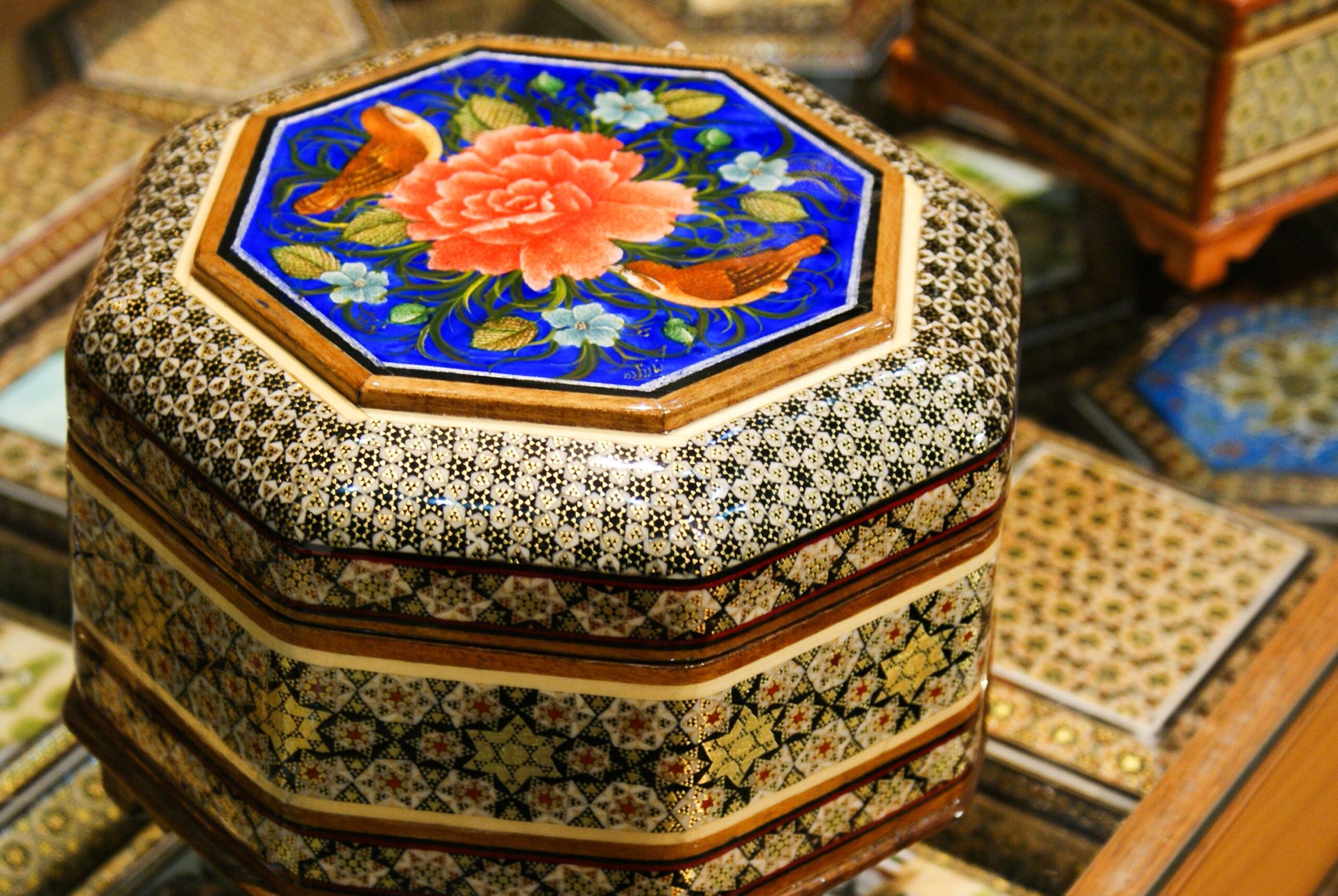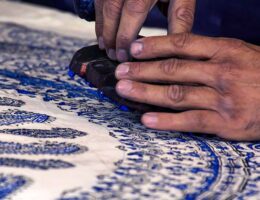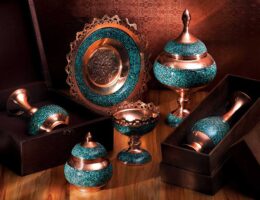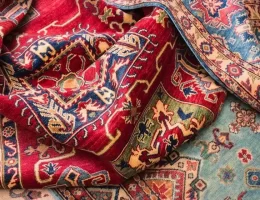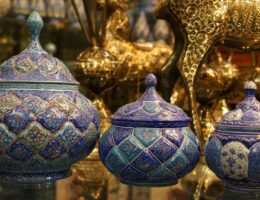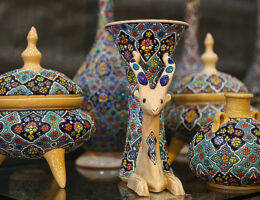IRAN ART EXHIBITION: YOU CAN SEE THE MOST PRECIOUS & HISTORICAL HANDICRAFTS IN IRAN!
Iran, as one of the most ancient civilizations of the world, and the land of many tribes so different in culture, lifestyle, and tradition has enjoyed a wide variety of handicrafts during history. Persian handicrafts, each narrating the stories of the culturally diverse populations in different parts of vast Iran, are among the best souvenirs for the tours to Iran.
Undoubtedly, the talent and creative power of the Iranians and their interest in art and the creation of artworks has been one of the factors in the persistence of Iranian handicrafts. However, Iranian culture, like other cultures in the ancient Near East, has a very complex and varied civilization, and we must refer to historical documents to study and identify it. We have to start studying the history of Iranian handicrafts from a very long time ago and examine the process of its evolution. In this way, we get access to the primary source of Persian crafts that is still prevalent in different parts of Iran today. The history of Iranian crafts indicates that Persian handicrafts were largely influenced by Greek art in the Seleucid period but gradually became an Iranian identity in the Parthian period.
Iranian handicrafts history
Sassanid and Seljuk eras:
During the Sassanid period, Iranian art and architecture recorded one of its peak periods, and Sassanid artisans perfected the Iranian metalworking industry. The examples of many trays and dishes featured in various designs from that era discovered in various countries, including in Russia, illustrate the extraordinary skill of metalworkers in Sassanid times.
It should also mention the silver casting used to make plates, bowls, cups, and mats, sometimes made in the form of birds and other animals. While gold, silver, or other metal containers decorated with gold or enamel methods. Among the arts related to Sassanid metalwork.
Undoubtedly, the Seljuk era is Iran’s most brilliant metal age. Because in this period, all kinds of containers and metal products were made in the copper mold and silver mold style as well as with the methods of manufacturing, engraving, and latticework. In the Seljuk era, in addition to the lattice, there were other new methods of metalworking, including the application of metals such as copper and silver to other metal alloys.
Safavid era:
IRAN ART EXHIBITION: There is no doubt that the carpet of Iran has passed through its most prosperous era in the Safavid era, and since that time, valuable masterpieces have been created. The most beautiful carpets of Iran in the Safavid era are known as the Ardebil Carpet, which is now held at the Victoria and Albert Museum in London.
Tabriz, Hamedan, Kashan, Kerman, Isfahan, and Herat were the most important carpet weaving centers in Iran. In the Safavid era, carpets were exported to European countries, and one of the most famous of these was carpets that were exported to Poland and are known as Polish Carpets.
History of Iranian Crafts after the Safavid era
In the Afshariyyah and Zandiyeh periods, we see a gradual decline in Iranian handicrafts, and even the works of Iranian painting during the Zandiyeh period showed the repetition of late Iranian Safavid art.
During the Qajar period, a relative change in coloring and theme occurred in the tile work, and in most of the tiles of this era, the use of red was observed in historical subjects or the daily life of the courtiers. However, tile work as one of the arts related to Iranian traditional arts and architecture, despite its ups and downs, is well-flourished.
Although the carpet weaving of Iran after the peak of glory and authority in the Safavid era, was less prosperous in the later periods, but recovered well after the Qajar period and exported to Europe and elsewhere.
The production of handmade glass has been declining since the Safavid era. But, over the past 30 years, we have witnessed the relative boom of this art-industry in Tehran, as the most important center for the production of handmade glass. Wood related arts such as Khatam and Monabat became more popular after the founding of the Old School of Crafts in 1309 AD.
Now a day, Iranian handicrafts have wonderful various that each have unique designs.
Most popular handicrafts:
Iranian weaving:
Iranian weavings are well-known for their antiquity, elegance, durability, and variety. The most famous one is the Persian carpet. It has been used as the covering for floors for thousands of years in Great Persia. Different geometrical shapes, medallions, tendrils, and figures of plants and animals woven with local materials specific to each area, inspired by the natural environment, remind people of colorful Persian gardens full of flowers and birds. Persian rugs woven by nomads are different in style and design. The most prominent nomad rugs include Gabbeh, Kilim, and Jajim.
our team write about different kind of Iranian weaving you read them if you want more information.
Iranian fabric named Ghalamkar is made by hand drawing or printed by the use of patterned wooden stamps. Termeh is another Iranian hand-woven cloth, primarily produced in Yazd. Its weaving is very delicate and time-taking. The most famous of the factories producing traditionally woven Termeh is called Rezaei Termeh. Another kind of Persian weaving embroidery is Zardozi. It is making designs using gold and silver threads, pearls, and precious stones. Nowadays, copper wires polished by gold or silver, and silk threads are used as well. It also includes Goldozi (embroidery stitches), Baluchi Suzandoi (needlework), Seke duzi (shisha embroidery), Rashti Qollabdozi (a special kind of broderie), and Kermani Pateh duzi (a style of Iranian embroidery).
Zarbaft Weaving
Persian art of handicrafts goes beyond textile weaving. It includes metal works, woodworks, pottery, miniature, calligraphy, straw-made products, mosaic, and stone.
The beginning of Persian metalwork goes back to Luristan bronzes. Iranian Metalworks include Minakari (Enamel working) and Ghalamzani (also Qalamzani or Toreutics) where in the metal is decorated with colorful coats, and carved or hammered. Isfahan is well-known for its enamel artworks.
IRAN ART EXHIBITION: Woodworks in Iran comprises Moarragh or Moarraq (an Iranian handicraft made of small pieces of different woods) and wood carving. Khatamkari is another Persian art of marquetry dating back to the Safavid period. The artist decorates the wooden surface of the jewelry boxes, chessboards, desks, and suchlike with different shapes (generally star-shaped) of pieces of wood, bone, metal, and sometimes gold, silver, ivory, and brass. Sometimes it is combined with miniature to make a unique work of art.
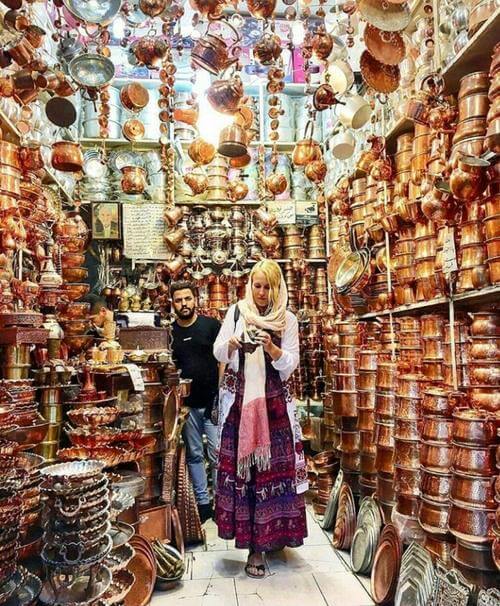
Iranian Moarraq
Persian art is not limited to the abovementioned and goes to the stone and mosaic. Turquoise Inlaying on jewelry or materials such as silver, copper, or brass is one of the distinct Iranian handicrafts. The turquoises of Mashad and Nishapur have the most fame with the highest quality.
Pottery and ceramics have a long history in Iran. Pottery dates back to more than around 6-7 thousand years ago in Susa, Tepe Sialk in Kashan, Jiroft, and the Burnt City. Kalpuregan Museum in Sistan and Baluchestan province is called the only live ceramic museum because its working style has passed from generation to generation for over 5 thousand years without any change.
Persian Pottery
Persian tilework is one of the spectacular Iranian art crafts. In the past, Isfahan and Tabriz were two main centers of Iranian mosaic. Golestan Palace in Tehran is another outstanding example of Persian tilework for the tours to Iran.
Miniature rose up in Iran in the 13th century and continues to this day. It is a very detailed usually small painting that requires great skill and proficiency, and an extremely small brush to paint such intricate elaborate artwork. The best example of a modern Persian miniature is Farshchian.
IRAN ART EXHIBITION: Persian calligraphy has several styles. Calligraphic embellishments have had the main role in Iranian pottery, metalwork, and historical buildings. Calligraphy reached its peak in illuminations of the Quran, Shahnameh, Divan-e Hafez, and other well-known Iranian literature. Nastaliq is the most popular Persian calligraphy style, known as Bride of the calligraphy scripts.
Firoozeh koobi
Turquoise Inlaying or Firoozeh Koobi is a combination of copper and turquoise stone. It is a Persian handicraft that is used to decorate jewelry, vases, candlesticks, plates, and various utensils, which in addition to artistic and aesthetic value, also has a significant material value.
Totally, Iranian handicrafts are super Georges and precious.
